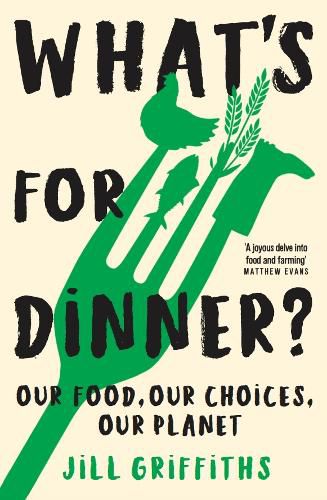Readings Newsletter
Become a Readings Member to make your shopping experience even easier.
Sign in or sign up for free!
You’re not far away from qualifying for FREE standard shipping within Australia
You’ve qualified for FREE standard shipping within Australia
The cart is loading…






What are we really eating? How do we eat in a way that nourishes us and does least harm to the environment? What exactly do farmers do? Should the world go vegan? Do food miles matter?
Never before has so much food been produced by so few people to feed so many. Never before have Australian consumers been so disconnected from their food production, yet so interested in how it is done.
What's for Dinner? delves into the way our food is grown and our responsibilities as eaters. Weaving together science, history and lived experience, What's for Dinner? takes readers on a journey to meet the plants, animals and people who put the food on our plates. It's a book for anyone who eats.
$9.00 standard shipping within Australia
FREE standard shipping within Australia for orders over $100.00
Express & International shipping calculated at checkout
What are we really eating? How do we eat in a way that nourishes us and does least harm to the environment? What exactly do farmers do? Should the world go vegan? Do food miles matter?
Never before has so much food been produced by so few people to feed so many. Never before have Australian consumers been so disconnected from their food production, yet so interested in how it is done.
What's for Dinner? delves into the way our food is grown and our responsibilities as eaters. Weaving together science, history and lived experience, What's for Dinner? takes readers on a journey to meet the plants, animals and people who put the food on our plates. It's a book for anyone who eats.
This nonfiction account by journalist and self-confessed food-obsessive Jill Griffiths is a deep dive into some of the biggest issues around agriculture, food production and food consumption in our increasingly complex world. Tackling the topic with a journalist’s eye and with a sympathetic ear to farmers and workers in the industry, Griffiths breaks down her subject into chapters about different food basics – tomatoes, wheat, potatoes, chicken, salmon, and many more – plunging us into the controversies, the issues, and the uncertainties that lie around each particular product. Each specific foodstuff provides an entry point to talking about other issues. For example, discussion of potatoes naturally leads into a discussion about pesticide usage and no-till farming. Or macadamias, which have been our most successful indigenous crop, offer a natural segue into an exploration of why the native foods industry has yet to really boom here, given it has so much potential.
Linking the food we eat to farming in Australia and the environmental impact of all the many steps from farm to table makes for a complicated network of relationships. What Griffiths uncovers about our food industry is that there are no hard and fast rules and no easy answers, but for anyone interested in how we get our food, the market constraints around it, and how hard farmers work to make a living, this is a fascinating insight into the latest research and knowledge on the topic. Well referenced and with some ideas for further reading, this is an informative and highly readable book for anyone who eats – which is all of us!
See what the Readings’ team have to say on the blog, discover related events and podcast episodes.
Discover new Australian nonfiction books at Readings, with biography, memoir, essays and analysis.